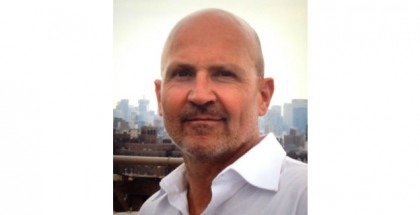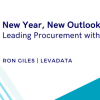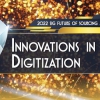Outsource: Hi Rainer: great to have you here today. As usual, let's begin with some background on you personally: tell us about yourself and your role within the organisation.
Rainer Machek: In 2001 I joined SynerTrade as a sales director; in 2003 I was nominated as a board director. Besides that, we all have customer relationships, so I am a key account director for customers like AGCO, Fresenius and Hugo Boss. For us it's always essential that we keep an ear to the market; that we have all the pros and cons of the market in our relationships with customers and that we are very close to what they are demanding and what we can do better.
In 2000 we began as a start-up with auctions and RFX, and then extended our suite to contract management, supplier relationship management within procurement; so right now we have 34 different apps which can be switched on or switched off depending on customer needs, and we're covering the whole source-to-contract process and procure-to-pay. We have some things that we can offer that began as specific projects for individual customers and that we can now offer to the market: reach or conflict material applications relevant for specific industries.
O: Are you entirely based in Germany?
RM: Our headquarters are in Munich but we have 17 offices around the world. Most of them are in Europe - in France, in the Netherlands, in Scandinavia, in Italy, in Spain and we've just opened an office in Montreal - but we have also had a New York office since 2004; we have since some years an office in São Paulo for Brazil and Latin America; since 2006 or so we've had an office in Shanghai. So we're following our customers around the sun, because certainly e-procurement is now a global activity. We started supporting European customers in their processes around the world, interacting with their vendors wherever they are in different languages.
O: So those offshore sites aren't just serving local customers but are part of your global integrated customer service approach?
RM: Absolutely. We have a lot of customers who do 50% of their spend for example in the US, so we have to be here; the same with languages. We have 24 different languages available in our tool covering all the major European languages - and even some not-so-major ones, like Slovakian - and also Hebrew, Arabic, Japanese, Mandarin and others.
We work hard to improve our company! We have around 280 people around the world but we don't have, say, 50 people in marketing producing content all the time; with putting a lot of effort into our technology - we put a third of our revenues into developing technology - and it seems like our approach is working because over the past five years or so we have always been in the top five in the Magic Quadrant of Gartner, we've always been highly recommended in Capgemini surveys. In 2016 our company was growing by 60% ,this year we plan to grow by 40%. So our approach seems to be a good one. Two or three years ago we put out a new release which was absolutely state-of-the-art and has been getting great feedback from the market, and this is surely one of the key drivers for that growth.
O: Taking a look at the broader market: what are the real drivers of change right now for you, and how are those affecting how you work with your clients?
RM: I have a split answer because it's a very mixed market. On the one hand we see beginners who have fears about whether the technology will work or not; on the other hand we have companies who are doing e-sourcing or whatever for 15 years or longer. So one trend I see is that some people are discussing best-of-breed or integrated solutions. When I look at some of our customers when they have four different departments and four different tools with four different administration areas, four different supplier and user databases, it's really a mess and you can never really speak about truly integrated processes.
In some of our customers we have integrated processes even beyond e-purchasing - so they work in one tool with packaging, with R&D, with controlling, with finance - and I see a big trend in collaboration and in social buying beyond the department pillars. For companies in manufacturing or production, it's very nice when R&D and purchasing can work closely together, because when a product is designed 80% of the cost is already there - because when the design committee says this particular wire, for example, must be platinum, where can you go from there? You can't go back and say "let's do it in aluminium": it's already been designed. So it's great to have a tool that can manage the whole process from R&D through manufacturing right through to controlling, to what money you have in stock: it's about that management of the whole process, and not simply negotiating the lowest price.
O: So how much of all this can be automated away?
RM: I think the boring steps can be automated away. What I said a moment ago about companies doing purchasing and having four different solutions in place, then you have manual double typing in data - and this is boring! We are in the 21st century: this is not state-of-the-art! That could be automated by a tool. Secondly in R&D they have their own tools; what about if something is already in - a drawing or a specification - why not shift that with an interface into the purchasing tool, and then you can just grab a whole specification, put it in your purchasing basket, and send it out to a vendor to get the best quotes for it?
This integrated collaborative approach is happening right now at some of our customers - and the same at the other end: you have the same data source at purchasing and controlling. It mustn't be that purchasing is saying they've gained $1 million of savings, but finance is saying it doesn't see that in the P&L: we should cross barriers between departments and even different companies. Let's reduce boundaries within companies and between the buying organisation and the first-tier vendor, the second-tier vendor, the third-tier vendor...
Right now if you have to choose between an Audi, a BMW and a Ford, you're not simply choosing the car itself: you're choosing between that supply chain and that supply chain and that supply chain. Both the manufacturers and all those different tiers of vendors are working together to get you the best car. When you decide at the end which car you want those entire supply chains are winning or losing. O: Are there any parts of the world that are doing all that better than others? RM: When I look at a global scale I see a lot of different approaches and most of them are good. In Germany I know companies are very effective and very efficient with good structures, but on the other hand they are far too focused on risk mitigation. The words you always hear are "who can guarantee me that this is going to work?" I can't guarantee you that we'll all be alive in five minutes’ time! I want to but I can't! Here in the US there is much more of an iterative approach: fail and try again, and try again, and try again. This fits better with the changing world right now. In France I see very hierarchical structures; in other places I see flatter approaches. Each has its pros and cons - but what I really love is that we aren't afraid to fail. Either we win or we learn! We should all be braver when it comes to risking failure...







